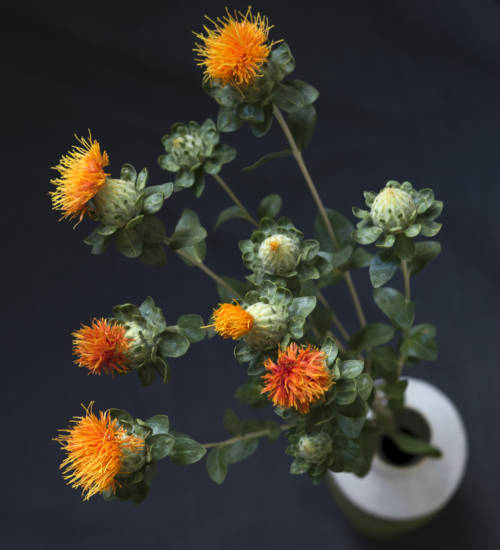
Ask Ella: Adding Safflowers to Your Fall Arrangements
Ask Ella is a recurring Garden Collage feature where we ask our in-house florist, Ella Stavonsky, about floral design– including the history of, origin, and maintenance that goes into some of the most intriguing flowers on the market today. This column is dedicated exclusively to common and rare varieties of flowers you’re likely to find at your local market. This week, we spotlight safflower, a medicinal plant that captures the beauty of Autumn in its color.
***
Most people are familiar with safflower in its oil form as a cooking accompaniment. A widely-available alternative to standard cooking oils (like canola oil), safflower oil can be healthier choice for recipes, helping to manage high cholesterol levels and reduce the risk of heart disease. Historically, and in folk medicine, it can also be used to treat fevers and coughs. In keeping with its healing properties, the small, fibrous orange flower has a healthful look about it: it’s not the most elegant flower per se, but it has a hearty, foraged charm that evokes a life led closely with nature. For rustic, wild arrangements, safflower is the perfect touch.
“Like most flowers, safflower should get cold water, changed every second day,” Ella informs us. “They can last a while– they even keep their color when dried.”
When used in arrangements, safflower adds a vivid colorful burst reminiscent of Fall. “Safflowers add a beautiful small detail,” Ella instructs. “Mix them with sunflowers and other colors from the Fall palette– and plenty of fresh greens– to make sure the color scheme doesn’t become too overwhelming.” Outside of standard floral options, you can try mixing in a few wild elements, like a branch of autumn leaves or a few stalks of dried wheat to create an arrangement that’s very much “of the moment”.


































